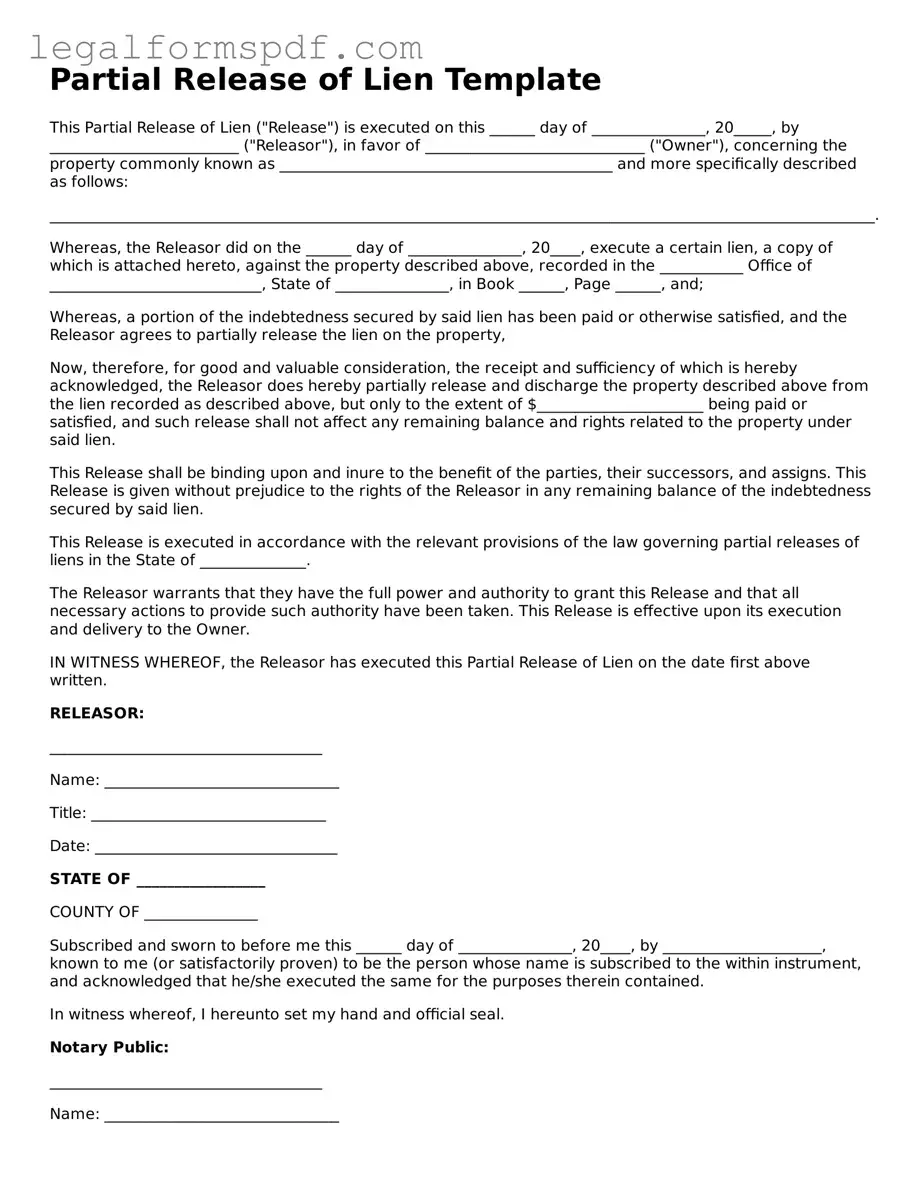Partial Release of Lien Template
This Partial Release of Lien ("Release") is executed on this ______ day of _______________, 20_____, by _________________________ ("Releasor"),
in favor of _____________________________ ("Owner"), concerning the property commonly known as
____________________________________________ and more specifically described as follows:
_____________________________________________________________________________________________________________.
Whereas, the Releasor did on the ______ day of _______________, 20____, execute a certain lien, a copy of which is attached hereto,
against the property described above, recorded in the ___________ Office of ____________________________, State of _______________,
in Book ______, Page ______, and;
Whereas, a portion of the indebtedness secured by said lien has been paid or otherwise satisfied, and the Releasor agrees to partially
release the lien on the property,
Now, therefore, for good and valuable consideration, the receipt and sufficiency of which is hereby acknowledged, the Releasor does hereby
partially release and discharge the property described above from the lien recorded as described above, but only to the extent of
$______________________ being paid or satisfied, and such release shall not affect any remaining balance and rights related to the property
under said lien.
This Release shall be binding upon and inure to the benefit of the parties, their successors, and assigns. This Release is given without prejudice
to the rights of the Releasor in any remaining balance of the indebtedness secured by said lien.
This Release is executed in accordance with the relevant provisions of the law governing partial releases of liens in the State of ______________.
The Releasor warrants that they have the full power and authority to grant this Release and that all necessary actions to provide such authority
have been taken. This Release is effective upon its execution and delivery to the Owner.
IN WITNESS WHEREOF, the Releasor has executed this Partial Release of Lien on the date first above written.
RELEASOR:
____________________________________
Name: _______________________________
Title: _______________________________
Date: ________________________________
STATE OF _________________
COUNTY OF _______________
Subscribed and sworn to before me this ______ day of _______________, 20____, by _____________________, known to me (or satisfactorily proven)
to be the person whose name is subscribed to the within instrument, and acknowledged that he/she executed the same for the purposes therein
contained.
In witness whereof, I hereunto set my hand and official seal.
Notary Public:
____________________________________
Name: _______________________________
My Commission Expires: _______________
